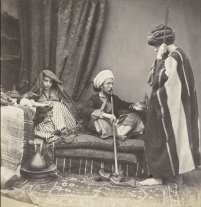Roger Fenton
dal 20/9/2005 al 2/1/2006
Segnalato da
20/9/2005
Roger Fenton
Tate Britain, London
A retrospective. One of the most important 19th-century photographers, he had a profound influence on the medium despite the fact that his career lasted for just over a decade. The exhibition includes approximately 90 works: key loans from the Royal Photographic Society, the Royal Library, Windsor Castle, and various art galleries and private collections in both the United States and Europe.

One of the most important nineteenth-century photographers, Roger Fenton had a profound influence on the medium despite the fact that his career lasted for just over a decade. Born in 1819, he abandoned his law studies to become a painter in 1839. After study in London he moved to Paris and became a pupil of Paul Delaroche. In 1851, however, he ceased his painting studies to take up the newly-invented process of photography. During the next eleven years, Fenton produced a widely varied body of work that represents one of the greatest accomplishments in the history of photography, covering landscape, architectural views, orientalism, portraits of the Royal Family, still lifes and the galleries of the British Museum. Commissioned by Thomas Agnew under the direct patronage of Queen Victoria, he travelled to Balaclava and Sebastopol to document the Crimean War. His photographs are among the first ever to depict war.
The exhibition, which, with approximately 90 works, is the largest exhibition ever to have been devoted to this photographer, and has been organised by the National Gallery of Art, Washington, The Metropolitan Museum of Art and the J Paul Getty Museum, Los Angeles. It is also the first exhibition of its kind held at Tate Britain. The selection includes key loans from the Royal Photographic Society, the Royal Library, Windsor Castle, and various art galleries and private collections in both the United States and Europe.
Supported by The Hite Foundation
Image:
Roger Fenton, Orientalist Group, 1858
Wilson Centre for Photography, London
Free Entry
Tate Britain
Millbank SW1P 4RG
London



